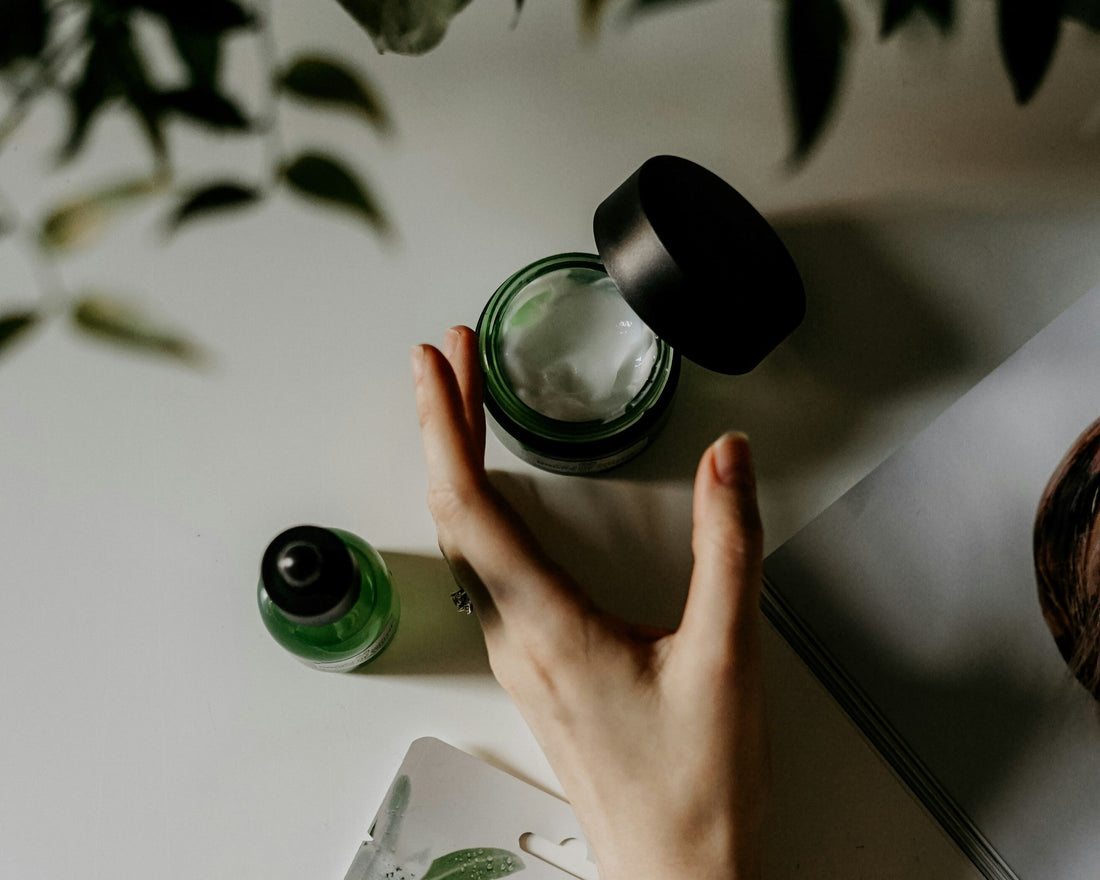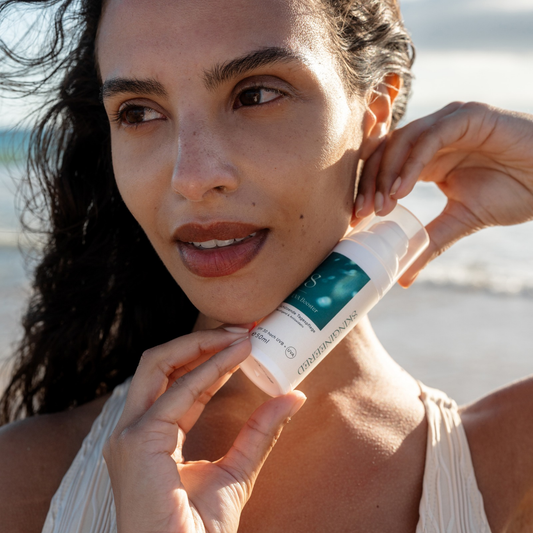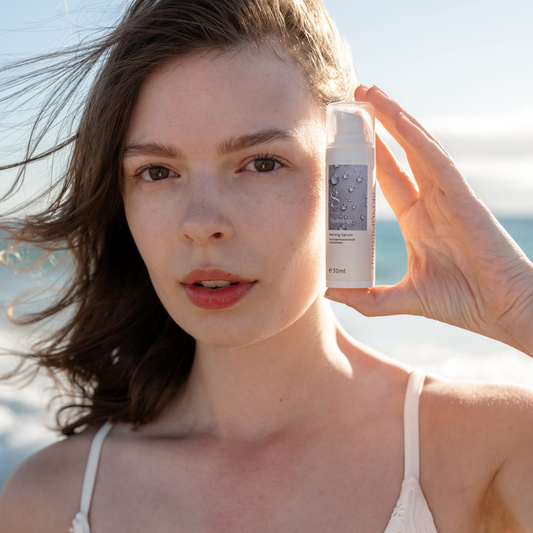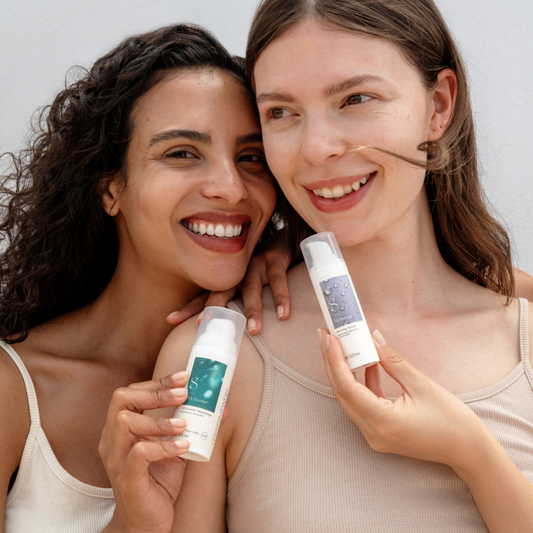How do I start a skincare routine?
Skincare is a trend. Social media is full of favorites, game-changers, and holy grails. But your skin isn't any happier after you've repurchased five of them? That could be because your skin's basic needs aren't being met, leaving specific active ingredients without any real benefit. Or perhaps the active ingredients simply aren't tailored to your individual skin's needs. We'll explore these aspects of your beauty routine below:
The basics:
Basically, there are only three product categories that are helpful for almost all skin types, and with just these, you've already achieved a great deal. If you want to build a skincare routine, start with these three products, stick with them for a while, and then see if you want more. Especially with the basics, you can find some great, affordable products at the drugstore!
1. Gentle cleansing
A cleanser should be gentle to avoid over-drying your skin. It doesn't need to do much more than cleanse. Your skin should feel comfortable and not tight after cleansing. Cleansers come in many forms: face wash, foam, bar, balm, etc. It's up to you which one you prefer. You can use the same cleanser morning and evening. However, if you wear a lot of sunscreen and makeup, an oil-based cleanser like a cleansing oil or balm is recommended for evening use. These cleansers can easily remove a lot of product while still being gentle on the skin.
2. Moisturizing care
A moisturizer consists of water-binding and nourishing substances. This helps the skin prevent moisture loss, which is essential for healthy skin. Healthy skin is often very good at regulating itself. However, in everyday life, we are often exposed to dry air from heating, hot showers, and other environmental factors, so a little extra support can be helpful and pleasant. There are various types of moisturizers available. Dry skin will likely prefer a rich cream, while oily skin might be satisfied with a light gel. The richness of the product can also be adjusted to the season (richer in winter, lighter in summer).
3. Sun protection
Sunscreen is essential for healthy skin to protect against harmful UV rays. Combined with shade and long clothing, a cream with SPF should be part of your morning routine. From March to October, between approximately 11 a.m. and 3 p.m., the sun's intensity in Germany can be so high that the WHO explicitly recommends sunscreen. However, even outside of these hours, using a UVA booster as a day cream has its advantages . Makeup with SPF is not enough! Try out a few products and see which texture you prefer. Finding the right sunscreen can be a challenge, but it's worth the effort. After all, the best sunscreen is the one you actually enjoy wearing!
When to use what.
In the morning: Cleansing and moisturizing are optional. Oily skin might prefer two cleansers a day, while dry skin might benefit from an additional cream under sunscreen.
In the evening: Sebum, product residue, and dirt should be washed off with a cleanser. Then moisturize the skin.

Photo: created with Stable Diffusion (AI)
Skin type and skin needs
What are the differences?
What skin type am I?
We've already discussed oily and dry skin, but knowing your own skin type isn't always so obvious. There are a few common misconceptions :
1. Blemished skin is not always oily. Dry skin can also be blemished.
2. Even oily skin can lack moisture. This is then called dehydrated skin (not enough water). Dry skin produces too little oil.
3. Many people say they have combination skin. However, true combination skin types are rather rare. It's perfectly normal for the T-zone to be a little oilier than the rest of the face.
Knowing your skin type can help you determine how rich the products should be. Ultimately, though, the best way to find out which texture feels most comfortable is to try different products. Even dry skin can use a cleanser designed for oily skin. In any case, they should be mild.

Photo: by Valeria Smirnova via Unsplash
What are skin needs?
While skin type is more or less a one-dimensional scale from dry to oily, there can be a wide variety of skin needs. You can have several simultaneously, and these can occur in combination with any skin type. While skin type is largely genetically determined and not very changeable, skin needs are skin conditions and can be addressed with some help.
Possible skin needs and suitable active ingredients :
◆ Dehydrated skin: Glycerin, hyaluronic acid, urea, lactic acid
◆ For blemished skin: Salicylic acid (BHA), niacinamide, azelaic acid
◆ Irritated skin: Panthenol, ceramides, Centella Asiatica, licorice root, ectoin
◆ Hyperpigmentation:High UVA protection , arbutin, thiomidol, tranexamic acid
◆ Slow-aging: retinol, peptides, vitamin C, antioxidants
It's important not to use everything at once, but to focus on one key skin need for a few weeks before adding another product to your routine. Not every active ingredient works equally well for everyone. Some ingredients shouldn't be used in unlimited quantities, as they can irritate the skin. Please research this beforehand. It's better to start with small concentrations and use them once a week than to over-irritate your skin.
The active ingredients can be integrated into your routine in the form of serums, toners, sprays, treatments, masks, peels, etc. The basic rule of thumb is:
◆ from liquid to viscous
◆ from watery to oily
Ultimately, what works and is enjoyable is what's good!
Conclusion: The art of skincare
You definitely don't need a 10-step routine for a proper skincare routine. But of course, you can if you want to and your skin tolerates it. The three essential basics are cleansing, moisturizing, and sun protection. Also, focus on your individual skin's needs and always be gentle with your skin. Skincare should never feel unpleasant. Regularity and a bit of patience are key. It also doesn't hurt to change your face towel more often, always remove your makeup before bed, pay attention to the expiration dates of products, and lead a healthy lifestyle.
Your Ying
Engineer, cosmetic scientist and founder of Skingineered












